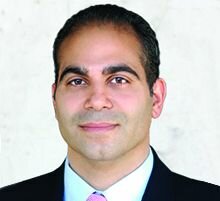
Anal fistulas are connections or channels between the end of the bowel and the skin near the anus. These connections between the glands in the anus and the skin may contain pus and be extremely painful before opening. Anal fistulas may be a sign of inflammatory bowel disease (IBD), such as Crohn’s disease. Fortunately there are several anal fistula surgery options to treat the problem.
Our Los Angeles colorectal surgeons at the Fissure & Fistula Center of Excellence regularly perform anal fistula repair surgery, such as anal fistulotomy and the anal lift procedure. Our treatment options are individualized to fit your needs. To find out how we can help treat your anal fistula, contact us today at (888) 512-2312.
Symptoms of an Anal Fistula
Every anal fistula is unique in the path it travels, from where it originates to where it ends. Some will end by breaking through the surface of the skin while others may travel through the sphincter muscle that is in control of the anus.
If you are suffering from any of the following symptoms, it is important to make an appointment with your doctor or colorectal surgeon:
- Pain around the anus
- Problems controlling your bowels
- Pus or blood around the anus
- Irritated skin around the anus
- Swelling in and around the anus
How Is an Anal Fistula Diagnosed?
Anal fistulas can be diagnosed during a physical exam. The colorectal surgeon may use a sigmoidoscopy or anoscopy to directly view which area is being affected. Another diagnostic method is the use of a fistula probe; this is a small instrument that is inserted through the fistula. When the sphincter is believed to be effected an MRI might be used to determine at what extent the fistula is causing problems.
Treatment for Anal Fistulas
Fistulas may be difficult to treat with medical management and conservative options and surgery becomes necessary. The expert colorectal surgeons at the Fissure and Fistula Center of Excellence in Los Angeles perform the following surgical treatment options:
- A fistulotomy, the most common procedure for anal fistulas, is an outpatient procedure in which anal fistulas are opened up and forced to heal from the inside out. The fistula normally heals within one to two months, depending on the extent of the original tract.
- A fistulectomy is when the fistula is removed completely. It is cut out and the wound is left to heal. Depending on the extent of the fistula, it may be performed over several surgical procedures.
- The LIFT procedure is usually reserved for the more complex fistulas, and involves the ligation of the fistula tract through a small incision between the sphincter muscles. The fistula then heals as no further debris or bacteria enter the tract.
- An endorectal advancement flap is a technique in which healthy tissue is used to cover fistulous openings, and prevent the reoccurrence of fistulas. During the procedure, the surgeon creates and lifts a flap of tissue to cover and seal the internal opening of the fistula.
- A fistula plug involves plugging the fistula with a specialized tissue plug made from porcine small intestinal submucosa. The plug acts as scaffolding for normal tissue to grow through and seal the fistula.
All these options can be performed on an outpatient setting.
Contact a Los Angeles Anal Fistula Expert!
Our doctors at the Fissure & Fistula Center of Excellence are here for you. For more information on the various management and treatment options for anal fistulas, or to schedule an appointment with one of our colorectal surgeons, contact us at (888) 512-2312.
Next, read about anal fistula symptoms.









